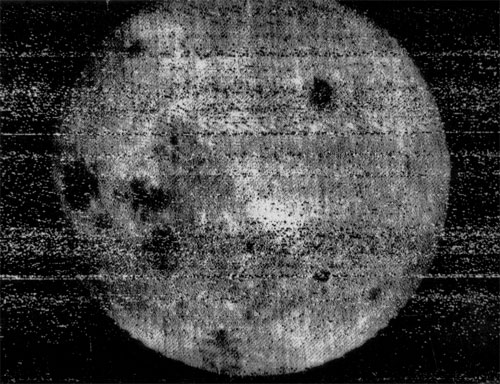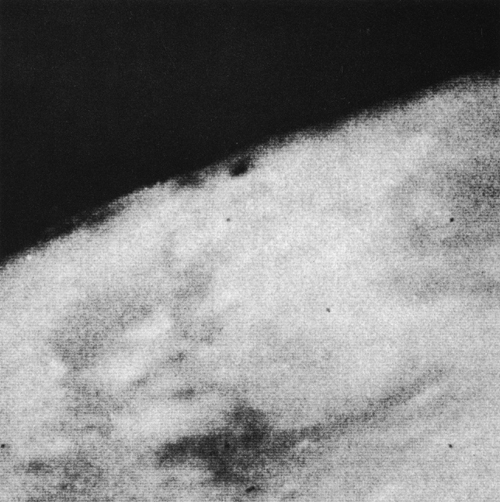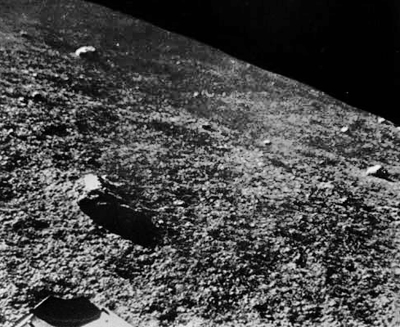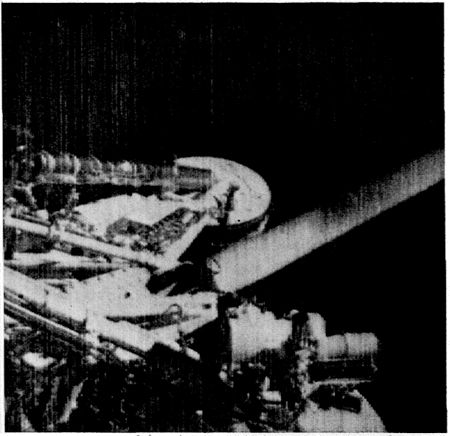

In the mid 20th Century the reach of photography stretched to encompass the Moon and Planets. This is one of the images of much of the Lunar Far Side, perpetually hidden from Earth, obtained by the Soviet Luna 3 probe on October 7, 1959. Luna 3 accomplished this using film exposed, developed, and scanned on board the spacecraft. The data 'lines' were then read as a light source passed through the negative, then the recorded transparency variations were sent as radio signals to Earth.
This general method was to be used with variations by Lunar probes sent by the USSR and the United States.

After a months long cruise between worlds, the cameras of the U.S. Mariner 4 spacecraft began their sequence of photographs during its close flyby of Mars on July 14, 1965. This, the first of these images, was perfectly timed to show the edge, or 'limb' of the planet. These first planetary probe photos revolutionized our ideas about Mars and began a fruitful spacecraft investigation of the Red Planet that continues to this day.

On February 3, 1966, the Soviet Luna 9 spacecraft made the first soft landing on the Moon and obtained photographs of its surface. Until then there was a wide range of opinion on how firm the ground was. The complete panorama can be seen here.

On June 1, 1966 The U.S. Surveyor 1 spacecraft landed and began photographing the surface with a video still camera seeing the scene through a movable mirror. This is the first television image returned after landing, reassuring the mission scientists that the surface was solid under the footpad.

Surveyor helped pave the way for the manned landings of Project Apollo. This photo was the first taken on the surface by Neil Armstrong, on July 20 1969.
The first look at the surface of another planet was accomplished by the Soviet Venera 9 lander when it touched down on the hostile surface of Venus on October 22, 1975. The entire panorama as initially released can be seen here. Later refinements of the images from the Venera landers can be seen on Donald P. Mitchell's site.
On July 4, 1976, the U.S. Viking 1 lander touched down on Mars and immediately obtained this view including one of its three footpads. As was the case for Surveyor, they wanted a quick look nearby including a footpad so this scan began thirty seconds after touchdown. The vertical brightness changes at the left of the image is from dust blown about during the landing briefly blowing over the area and drifting away. The first color picture from the surface of Mars, obtained the next day, can be seen as a color corrected version here.